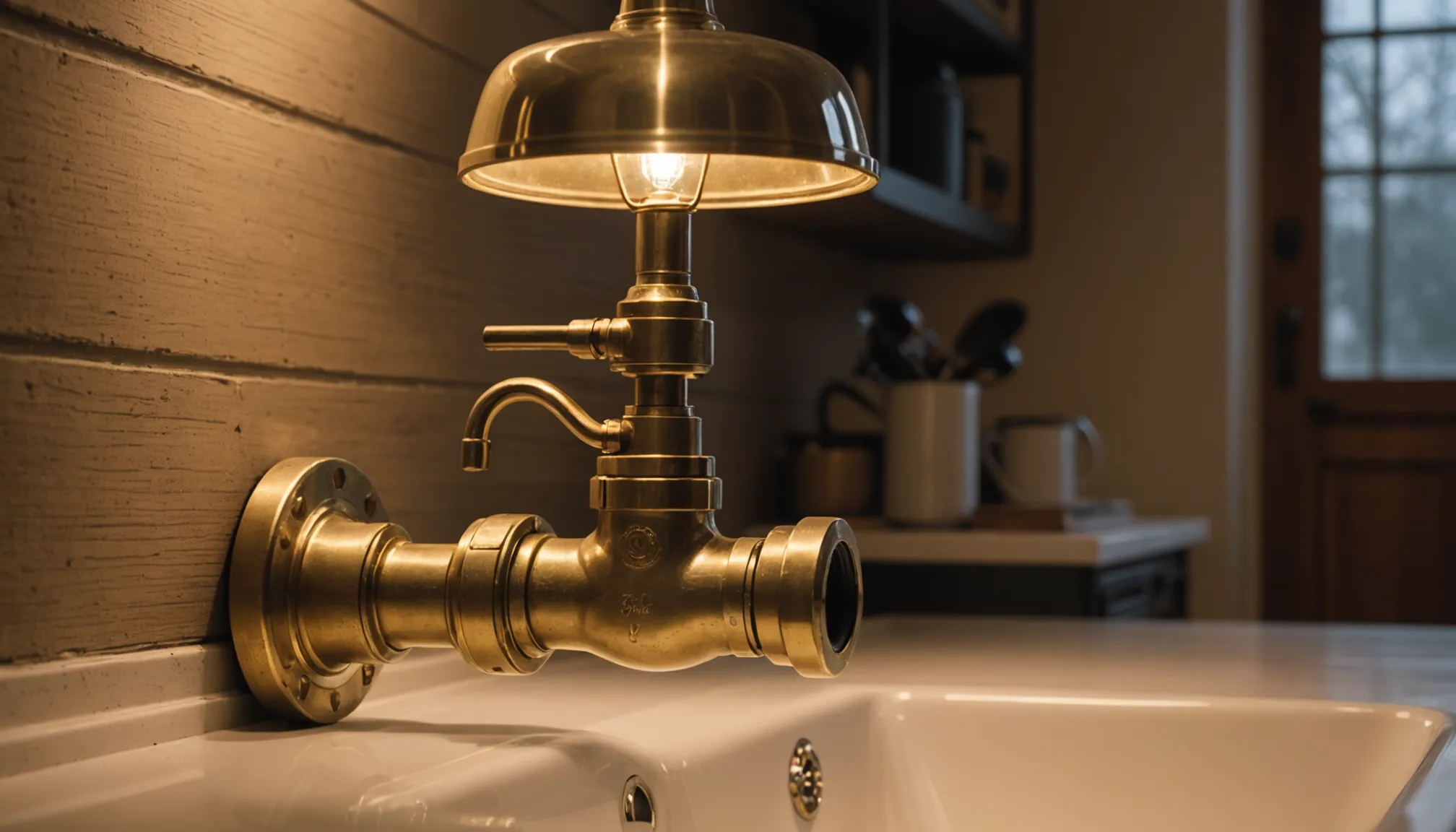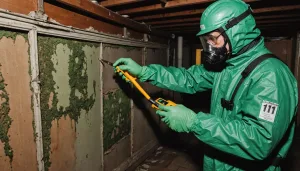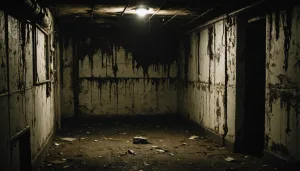For any homeowner, understanding the basic components of a plumbing system is fundamental to maintaining a functional, efficient, and trouble-free home environment. The more you know about your plumbing system, the better equipped you’ll be to handle minor issues, prevent potential problems, and make informed decisions about repairs and upgrades. Here’s an overview of the main components that make up the typical home plumbing system.
At the heart of the system is the water supply line. This primary component includes the pipes that deliver municipal water to your home. Depending on your location, these pipes might be made of copper, PVC, or PEX. Typically, the water supply line connects directly to the main shutoff valve, a critical part that allows you to control water flow into your home entirely, which is crucial during emergencies or repairs.
Next, the drainage system carries away wastewater from your home to the municipal sewer or septic system. This consists of larger pipes that rely on gravity to move waste away from your sinks, showers, toilets, and appliances. Modern drainage systems often include elements such as traps and vents to prevent clogs and ensure the smooth flow of wastewater.
The major water-consuming fixtures, such as water heaters, are also pivotal. This component not only affects the availability of hot water but also influences energy consumption within your plumbing system. Understanding how different water heating options—like tankless versus traditional tank heaters—compare can guide you in choosing the right system for your home:
| Water Heater Type | Pros | Cons |
| Tankless |
|
|
| Traditional Tank |
|
|
Another critical component is the plumbing fixtures and appliances, such as sinks, toilets, refrigerators, and dishwashers. These elements not only impact the functionality of your home but also its aesthetic appeal and comfort level. Each fixture and appliance connects to both supply and drainage plumbing, making understanding their operation and integration vital for any homeowner.
Finally, plumbing system components like valves and fittings play crucial roles in managing the flow and pressure of water throughout the system. Valves allow you to isolate certain sections during repairs or emergencies, optimizing overall water usage efficiency and prolonging the system’s lifespan.
By familiarizing yourself with these core elements, you create a foundation of homeowner basics in understanding your plumbing system. This knowledge empowers you to implement preventative measures, communicate effectively with professionals, and ensure your home’s plumbing operates smoothly for years to come.
Recognizing common issues
Plumbing issues can arise unexpectedly, disrupting your day-to-day life. Recognizing these common problems early can save time, money, and inconvenience. Here are some frequent plumbing issues and ways you can identify them:
1. Leaks
Leaks are one of the most prevalent plumbing issues homeowners face. They can occur in various parts of the plumbing system, from faucets to hidden pipes. Detect leaks early by:
– Checking under sinks and around appliances for water pooling.
– Looking for water stains on ceilings or walls, which may indicate a leak from pipes located behind them.
– Monitoring your water meter readings for unexplained increases, which could suggest a hidden leak.
2. Dripping Faucets
A dripping faucet might seem like a minor nuisance, but it can lead to significant water waste. To address this:
– Identify the source of the drip, often caused by a worn washer or O-ring.
– Turn off the water supply before disassembling the faucet to replace the faulty component.
– Ensure components are tightly reassembled to prevent further dripping.
3. Clogged Drains
Clogs can occur in sinks, showers, and toilets, leading to slow drainage or backups. Recognize a potential clog by:
– Observing water draining slower than usual.
– Noticing gurgling noises from drains, indicating air trapped in the pipes due to a clog.
– Experiencing unpleasant odors from decomposing debris caught in your drains.
4. Running Toilets
A running toilet can waste hundreds of gallons of water daily. Here’s how to check for this issue:
– Listen for water continuously flowing into the toilet bowl.
– Check the flapper valve inside the tank. If it’s not sealing properly, water will keep escaping into the bowl.
– Assess the fill valve and adjust the float arm if necessary to stop overfilling.
5. Low Water Pressure
Low water pressure can make routine tasks more time-consuming and frustrating. To investigate:
– Determine if low pressure affects all fixtures or is localized to one. This will help identify whether the issue is system-wide or isolated.
– Check for calcium or mineral build-up in faucets and showerheads that can restrict water flow. Soak fixtures in vinegar to dissolve deposits.
– Inspect the pressure regulator, which may need adjusting or replacement.
6. Water Heater Malfunctions
Issues with water heaters can lead to cold showers and inefficient heating. Identify problems by:
– Listening for odd noises from the heater, such as popping or cracking, indicating sediment build-up.
– Checking if the water is not as hot as expected; the thermostat might need adjustment.
– Noticing leaks around the heater, suggesting tank corrosion or faulty connections.
By familiarizing yourself with these common plumbing issues, you equip yourself with homeowner basics crucial for maintaining a functional home. Timely recognition and intervention can prevent small issues from escalating into costly repairs, ensuring your plumbing system runs smoothly and efficiently.
Conducting regular maintenance
Plumbing systems, while intricate, can be kept in top condition with regular maintenance practices, many of which homeowners can manage themselves. By understanding and implementing effective maintenance routines, you can preempt costly damages and enjoy continuous, hassle-free access to water in your home.
First and foremost, regular inspections of visible piping under sinks, around appliances, and at joints or valves can reveal early signs of corrosion, wear, or leaks. Catching these issues early with a simple visual check can save you from more serious water damage that might require professional intervention down the line.
One essential maintenance task is to keep your drains clear and free-flowing. This involves regular cleaning using non-corrosive solutions or even simple home remedies like baking soda and vinegar. Routine cleaning prevents build-up from hair, grease, and other debris that can lead to serious clogs. Moreover, investing in strainers for your sinks and showers to catch debris before it enters the plumbing system can further prevent blockages.
Maintaining your water heater is crucial for optimal performance. This involves flushing the tank annually to remove sediment build-up, especially if your water has a high mineral content. Sediment can reduce efficiency and, in severe cases, damage the interior of the tank. Checking the anode rod in your water heater will also prevent rust and extend the unit’s lifespan. These simple maintenance steps can prevent unexpected cold showers and increase the longevity of your device.
Consistently monitoring water pressure throughout your home can alert you to potential problems. Regular checks using a pressure gauge can help ensure pressure is within a safe range (typically 40-60 psi). Too high pressure can strain pipes and fixtures, while too low pressure can indicate a blockage or a problem with your regulator, necessitating a closer inspection.
Furthermore, it’s wise to periodically check your toilet tanks for leaks by adding a few drops of food coloring to the tank and seeing if it seeps into the bowl without flushing. This easy test helps identify silent leaks that could waste significant amounts of water. Ensuring all moving parts within the tank are functioning correctly prevents water loss and subsequent increases in your water bill.
For those wanting to delve deeper into effective maintenance practices, it’s prudent to consult your plumbing system’s manuals or seek expert advice tailored to your home’s unique setup. Investing a little time each month to conduct these activities not only aligns with homeowner basics but also significantly reduces the likelihood of emergencies that disrupt daily life. By taking proactive steps in maintaining your plumbing, you not only safeguard your home but also contribute to a greener, more efficient environment.
Implementing water-saving techniques
Conserving water is not just an environmentally conscious decision but also a financially savvy one. Implementing efficient water-saving techniques can significantly reduce your water bill and lessen the strain on your plumbing system, a crucial aspect of homeowner basics. Here are several strategies you can employ to achieve this.
Start by considering the installation of low-flow fixtures. This includes faucets, showerheads, and toilets designed to use significantly less water than traditional models. For instance, low-flow showerheads maintain satisfying water pressure while reducing the volume of water used per minute. Similarly, dual-flush toilets offer options for using different water amounts, depending on the waste, which can lead to substantial savings over time.
In the kitchen and laundry room, ensure that you only run dishwashers and washing machines with full loads. Modern appliances often have eco-friendly settings that minimize water usage, so take advantage of these features whenever possible. Also, consider upgrading to Energy Star-rated appliances, which are engineered to be more water and energy-efficient.
Checking for leaks throughout your home is an essential part of water conservation and plumbing maintenance. Even small, seemingly insignificant leaks can cumulatively lead to significant water wastage. Regularly inspect plumbing fixtures and appliances to ensure there are no leaks. A simple way to check for toilet leaks is by adding food coloring to the tank; if the color appears in the bowl without flushing, a leak is present.
Incorporating outdoor water-saving practices can also contribute to your conservation efforts. Opt for native plants in your garden, which require less watering, and install a rain barrel to collect runoff that can be used to water plants. For those with irrigation systems, ensure that they are equipped with rain sensors and programmed to water during cooler parts of the day to reduce evaporation loss.
Additionally, being mindful of everyday water usage can make a significant difference. Simple actions like turning off the tap while brushing your teeth or reducing shower time can collectively impact your overall consumption. Educating your household about these practices fosters a community effort to sustain these habits long-term.
By integrating these water-saving techniques into your daily life, not only do you reduce your utility costs and environmental footprint, but you also ensure the efficient operation of your home’s plumbing system. Taking the initiative to conserve water aligns with essential homeowner basics, reinforcing the importance of sustainability in home maintenance.
Knowing when to call a professional
While many plumbing tasks can be tackled by diligent homeowners, certain situations undoubtedly warrant the assistance of a professional. Knowing when to call in a plumber is an essential aspect of smart home maintenance and can save homeowners from exacerbating problems that might lead to more costly repairs.
One clear sign that professional help is needed is recurring clogs. If you find that you’re frequently dealing with slow drains or blockages, despite regular cleaning efforts, there may be a deeper issue within your plumbing system. Tree roots invading the sewer line or significant build-up within pipes are problems best resolved by trained professionals who have the necessary tools and expertise to address such challenges effectively.
Another scenario calling for expert assistance involves major leaks or pipe bursts. Although homeowners can handle small drips, significant water damage can occur quickly with substantial leaks, making it crucial to act swiftly. A professional plumber can identify the source of the leak, determine the extent of the damage, and implement a durable solution that will prevent future incidents.
Low water pressure throughout the entire house is another issue that might require plumbing professionals’ expertise. While localized low pressure could relate to a single fixture, house-wide issues could be symptomatic of a more serious problem, such as corrosion or a break in the main line. A professional plumber can conduct thorough inspections and provide the appropriate repairs, safeguarding the integrity of your plumbing system.
Water heater issues also often necessitate professional intervention. Whether it’s due to irregular heating, strange noises, or visible signs of corrosion, water heaters are complex and potentially hazardous to work on. A qualified plumber can safely diagnose and fix water heater issues or advise on replacements if needed.
Even non-emergency situations like remodeling offer opportunities to leverage professional expertise. Rerouting plumbing pipes or replacing old fixtures requires technical knowledge to ensure compliance with current building codes and to prevent future issues.
Overall, recognizing when a situation is beyond the scope of homeowner basics and knowing when to enlist a professional’s help can protect your home from unnecessary damage and expense. While routine maintenance and simple fixes can be managed independently, the expertise of a professional plumber is invaluable in ensuring the longevity and reliability of your plumbing system.
In conclusion, having a thorough understanding of your home’s plumbing system equips you with the knowledge to address minor issues, conduct essential maintenance, and implement effective water-saving techniques. However, it’s equally crucial to recognize the limits of DIY plumbing and when to call in a professional. By combining proactive maintenance with informed decision-making, you ensure the smooth operation of your plumbing system, safeguard your home, and contribute positively to the environment.






